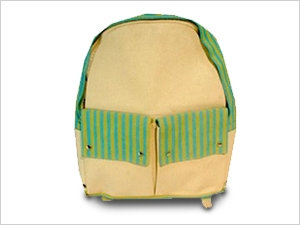
The carioca designer Gilson Martins was born in the Port Zone in the Center of Rio de Janeiro and had his childhood punctuated by the most representative images of the Carioca landscape. Graduated in Scenography at the School of Fine Arts of the Federal University of Rio de Janeiro, he presented the use of non-conventional materials in the creation of bags, proposing a new concept and look at recycling and a new aesthetic for fashion and design. He was the first designer to use the Brazilian flag in fashion, promoting a moment of self-esteem and pride in Brazilian society. This work was supported by the Federal Government, which recognized in its work the "Brazil brand", promoting it in the international scenario. The ?Brazil bags? were exhibited in several cities that hosted the World Cup, such as Paris, Berlin, New York and Tokyo. The designer also develops a work of sustainability, using leftovers from the manufacture of the bags through upcycling, creating new products and generating income for his former seamstresses, who form small groups of artisans in the communities near his factory. His work had a strong impact during the Olympic Games in Rio de Janeiro in 2016,. The designer created products for the International Olympic Committee, Coca-Cola, L'Oréal, for the Japanese Olympic Committee and other multinational companies. His two shops in Ipanema and Copacabana receive customers from all over the world, and are references of Brazilian design with humor and quality. French, Italian, Germans, Japanese and American people are among those who are great lovers of Gilson Martins products and are his main potential shoppers. |

FIRST BACKPACK
The first backpack was produced with beach chair canvas, a leftover material from his father's work upholsterer. From the model that insisted on tearing, the then student recreated the piece with a more resistant fabric and a more functional design. The first clients were his classmates and teachers at the university.

THE UNCONVENTIONAL MATERIALS

THE SCULPTURE BAGS


THE RIO BAGS

BEFORE THE BAG
He presented himself as an artist and proposes screens and installations observed in his factory, reinterpreting raw materials and production processes as works of art.





